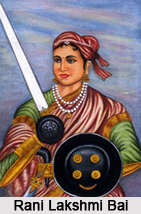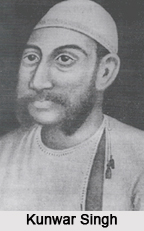 The Sepoy Mutiny of 1857 was against British rule in India, when many Indian states were attacked to remove Britishers from the respective territories. Given below are the attacks by the rebels on the different Indian states.
The Sepoy Mutiny of 1857 was against British rule in India, when many Indian states were attacked to remove Britishers from the respective territories. Given below are the attacks by the rebels on the different Indian states.
Siege in Northern India
When the company established a base on the Delhi ridge to the north of the city, the Siege of Delhi commenced. A scenario developed that made the company forces seem under siege. Unfortunately, Delhi was recaptured by the British. This, including the refusal of the aged Mughal Emperor, Bahadur Shah II to continue the struggle could not lend a national character to the rebellion.
The Siege of Cawnpore by the rebel forces relates to the surrender of the besieged company forces and civilians in Cawnpore. They were then offered safe passage to Allahabad. Unfortunately, the clearing was not smooth and the British women and children captured by the Sepoy forces were killed, which enraged the company. The company forces retaliated by targeting the captured rebel soldiers and local civilians.
 The Siege of Lucknow relates to the attacks on British forces in the state of Awadh by the rebels. Sir Henry Lawrence, a British Commissioner was in Lucknow at the time. He utilized the time available to consolidate his position inside the residency compound. Post two successive relief attempts, the defenders and civilians were evacuated from the residency. In Agra, a column of British troops was targeted by the rebels, but the rebels were defeated.
The Siege of Lucknow relates to the attacks on British forces in the state of Awadh by the rebels. Sir Henry Lawrence, a British Commissioner was in Lucknow at the time. He utilized the time available to consolidate his position inside the residency compound. Post two successive relief attempts, the defenders and civilians were evacuated from the residency. In Agra, a column of British troops was targeted by the rebels, but the rebels were defeated.
Seige in Central India
Seige in Central India relates to the capture of the fortress city of Gwalior by Rani Lakshmi Bai and a group of Maratha rebels. Unfortunately, Gwalior was recaptured by the company forces. There were also attacks launched by the Sepoys in Holkar`s army on the pickets of Bhopal Cavalry. When the Bhopal Cavalry and Bhopal Infantry refused orders of counter attacking, Durand, the then-Company resident at Indore, decided the escape of all the European residents.
Siege in Eastern India
The Siege in Eastern India relates to the attacks by the Bengal Native Infantry Sepoys and irregular forces lead by Kunwar Singh, the local zamindar on a fortified outbuilding in Arrah, Bihar. Even the treasury in Chittagong was grabbed by the Sepoys for a short time. The Sepoys united with the common populace in Jalpaiguri to take control of the city`s cantonment.
Siege in Western India
Siege in Western India relates to the capturing of the region under Gaekwad of Baroda State by the Vaghers in 1857. The region was recaptured in 1859 by the British, Gaekwad and other princely states troops.



















